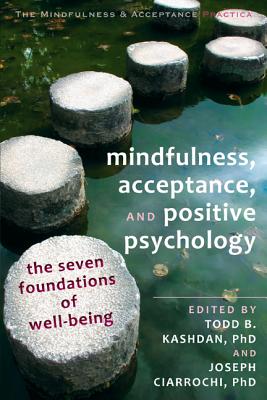Therapy
Positive Psychotherapy: An Overview
THC Editorial Team September 27, 2021

Contents
- Overview
- What Is Positive Psychotherapy?
- How Does Positive Psychotherapy Work?
- What Conditions Are Commonly Treated by Positive Psychotherapy?
- The Potential Benefits of Positive Psychotherapy
- The Effectiveness of Positive Psychotherapy
- Summary and Key Takeaways
In most cases, psychotherapy emphasizes alleviating negative feelings or behaviors or easing unwanted symptoms. This approach can result in people focusing on the unfavorable feelings they are trying to overcome. However, newer approaches aim to do more than just help individuals feel better; they also strive to improve people’s overall well-being and promote authentic happiness. Positive psychotherapists conceptualize happiness as cultivating satisfaction, encouraging involvement in fulfilling activities, and pursuing meaning.1
A more recent trend in treatment, positive psychotherapy, or PPT, shows promise in treating various conditions like depression and anxiety. Rather than focusing on the negative aspects of a condition, such as dysfunction, positive psychotherapy emphasizes each individual’s strengths and ability to overcome distress and increase their quality of life.1
What Is Positive Psychotherapy?
Positive psychotherapy is a mental health approach that seeks to foster personal development and help individuals flourish instead of simply managing a condition’s negative aspects. Research has shown that this treatment can also enhance happiness and contentment in those who do not suffer from a physical or mental illness.2
By focusing on the positive, therapists seek to support individuals as they assume personal responsibility during the treatment process. After identifying areas where growth can occur, clients are better equipped to move forward to reach their innate potential.3
One of the integral tenets of positive psychotherapy is that everyone has two basic capabilities: perception and love. Through positive psychotherapy, people can harness these capacities to develop useful abilities. For example, the capacity of perception, associated with knowledge, can help develop the secondary capacities of punctuality, honesty, and orderliness. The capacity to love, or the emotional sphere, can help an individual develop patience, confidence, and faith. These qualities strengthen the client’s ability to overcome obstacles and manage the human condition.4
Individuals are also encouraged to practice gratitude, forgiveness, and empathy to become more resilient to future problems and live more happily in the here and now.
How Does Positive Psychotherapy Work?
The therapist will help individuals uncover inner resources that they already possess, like optimism, hope, and social intelligence, to overcome the challenges they face.3 This process helps to foster resilience, which helps protect against present and future challenges.5 This empowerment enables individuals to enhance positivity in both their day-to-day lives and their overall life experience.
Positive psychotherapy has three core principles: hope, balance, and consultation. These key concepts are essential in addressing the concerns of individuals and must be actively engaged for this form of therapy to be truly effective.6
Principle of Hope
As with most forms of therapy, positive psychotherapy addresses the psychological conditions and daily struggles that a client encounters in their everyday life. What makes positive psychotherapy unique is that, in addition to teaching people how to overcome or handle problematic symptoms, conditions, or experiences, therapists teach individuals how to reframe situations and cultivate hope.4,7
More specifically, therapists instruct people to reframe negative thoughts in more optimistic and useful ways by looking for any potential benefits of a particular experience. For example, instead of someone with insomnia focusing on their struggle to sleep, they could acknowledge a benefit of their condition: having more time each day to accomplish their goals.7
Principle of Balance
When people face difficulties, they may experience illness or discontent if their coping mechanisms are unbalanced. According to positive psychotherapy, this imbalance may occur in four areas:7
- body/sense
- achievement/activities
- contact/environment
- fantasy/future
Typically, this imbalance occurs when people focus too much on one of these ranges, which leaves the other areas of life unfulfilled. Positive psychotherapists teach clients to redirect their perspective on both their present and memories of the past to give them a more balanced context for their lives and struggles. A balanced positive psychotherapy session focuses on the positive aspects of the client’s life, keeping those factors at the forefront while also attending to negative emotions and troubles.2
Principle of Consultation
Consultation involves the actual process of treatment. According to the tenets of positive psychotherapy, individuals must work through the following five steps for the therapy to be effective.7
Observation.
During this step, individuals identify and discuss the issues at hand. Therapists encourage clients to provide detailed accounts of the situations that upset them and those that bring them joy.7
Taking Inventory.
Once the issues have been identified, therapists can work with clients to determine the correlation between the negative symptoms and the individuals’ past struggles and traumatic experiences, often from up to 10 years prior to the session.7
Situational Support.
At this stage, individuals begin completing a self-led portion of therapy, during which therapists encourage them to focus on their positive traits. Additionally, clients are inspired to look to the people in their lives who give them the most support and identify the positive characteristics they admire within those individuals as well. The client can harness what they have learned about themselves and their past experiences to resolve current conflicts and issues.7
Verbalization.
In this step, therapists encourage clients to openly discuss their negative feelings or the challenges they wish to overcome.7
Goal Development.
During the final step, therapists encourage individuals to develop goals for the future, such as where they want to see themselves and the positive feelings that reaching these goals will generate. At this point, therapists help individuals connect their strengths with the steps that will be necessary to accomplish their goals.7
What Conditions Are Commonly Treated by Positive Psychotherapy?
This rather recent form of therapy is currently being applied to different types of conditions and disorders and shows promise in helping people live better lives.
Depression and Anxiety
Depression and anxiety are perhaps the most frequently studied conditions treated with positive psychotherapy. Because this type of therapy is thought to increase positive emotions, uncover meaning in life, and promote active engagement in work, relationships, and leisure, clients are better able to overcome the negative feelings associated with these conditions.2
Schizophrenia
People with schizophrenia or other forms of psychosis may also benefit from positive psychotherapy. Research shows that some people with psychosis have been able to increase their happiness and overall well-being, as well as improve their social function and engagement with others.8,9
Other Conditions
Researchers have also examined whether positive psychotherapy can be applied to other types of conditions. For example, some areas of study that show promise include smoking cessation,10 chronic pain,11 and certain neurological conditions.12 Similarly, although many therapies are designed to address mental and emotional conditions, research has found that treatments such as positive psychotherapy may also be effective in helping people overcome negative physical sensations.2
The Potential Benefits of Positive Psychotherapy
As with any other form of treatment, positive psychotherapy is designed to help individuals overcome the issues they are struggling with. However, positive psychotherapy has several potential beneficial factors.
Empowerment
Being partially self-led, individuals are encouraged to take their therapeutic practice into their own hands. This can reduce the need for future therapeutic interventions as people can utilize their strengths to overcome potential challenges both present and future.7 For example, individuals with acquired brain injuries who participated in an 8-week positive-psychotherapeutic intervention in 2020 reportedly felt empowered at the end of the study. The participants gained new skills, like social participation and the ability to execute tasks, and were more able to overcome challenges in their day-to-day lives. This newfound sense of independence empowered them to try new things, such as shopping alone.13
Reframing
Positive psychotherapy helps people learn how to examine negative experiences and somehow find a silver lining. By altering how they view adverse circumstances, individuals learn to have a more positive outlook on life. Reframing does not ask the client to ignore or disregard a difficult circumstance or experience but instead to consider how a more positive or hopeful perspective might alter their perception. For example, a mother who toils diligently to provide for her son may feel neglected and upset if her son frequently forgets her birthday but routinely saves up for his father’s birthday gift. With positive psychotherapy, she could instead reframe the situation to create an alternate meaning: although her son feels he must earn his father’s love, he feels secure in his mother’s affection.14
Balance
By teaching a model for thinking about the core areas of life, positive psychotherapy enables individuals to realize where they overfocus and what areas they may need to develop. This process can help people find more balance and thus more overall satisfaction with life.15 Positive psychotherapists claim that disorders and difficulties are likely to arise when someone places excessive emphasis on one of the four areas of balance; positive psychotherapy helps clients find and maintain balance.16
Physical Health
Studies have shown that positive-psychotherapeutic interventions can benefit one’s physical health. For example, research has suggested that positive psychotherapy can help protect against cardiovascular disease and decrease the risk of a cardiovascular event.17 Additionally, a poor emotional state is associated with poor health outcomes in patients with cardiac disease.17
Happiness
Positive psychotherapy aims to make people happier. Positive psychologist Martin Seligman proposed a three-pronged idea of happiness. One aspect is termed the pleasant life and includes feeling satisfaction and contentment with one’s past, present, and future. Positive psychotherapy uses hopeful and optimistic interventions to encourage these feelings and teaches clients to savor experiences. The next concept, the engaged life, purports that involvement and absorption in activity contribute to happiness. To foster this aspect, positive psychotherapy identifies clients’ signature strengths and develops interventions to stimulate them. For example, someone whose signature strength is creativity might be encouraged to take up pottery.2 Finally, the meaningful life emphasizes that happiness is based on pursuing a meaning greater than oneself. Positive-psychotherapeutic interventions to stimulate this outcome might encourage involvement in institutions like religion, community, or nation.2
The Effectiveness of Positive Psychotherapy
Some studies have asserted that traditional psychotherapy is only about 65% effective, and positive psychotherapists and psychologists believe that scenario is due to the focus on negative emotions.1 Positive psychotherapists suggest that the emphasis on expressing negative emotions, such as anger, so that they do not fester and show up in unexpected areas of one’s life serves to place clients in a passive position—victims of their own negative emotions. However, positive psychotherapy encourages and fosters positive emotions because it posits that emphasizing positivity leads to a better mindset and decreased depression.1
Indeed, studies have revealed clear evidence that some clients respond particularly well to the positive focus in positive psychotherapy. Clients in several survey studies on positive psychotherapy have self-reported positive evaluations of this form of therapy. In particular, they noted that positive psychotherapy allowed them to focus on the positives that already exist in their lives.18
In addition, the effects of PPT are potentially long-term; more specifically, the self-led portion of this therapy is designed to encourage clients’ active participation in treatment outside of sessions and improve quality of life even after treatment.19 For example, a 2007 longitudinal study used positive psychotherapy to treat 402 participants with different psychoactive disorders, including depressive disorders, personality disorders, and anxiety disorders, over an average of 30 one-hour sessions. Using questionnaires, the researchers found that participants showed a “distinct reduction” in symptoms in comparison to the control group; importantly, using a cross-sectional analysis, the researchers found that participants showed similar patterns 4 to 5 years after the initial positive-psychotherapeutic intervention.20
Despite the successes of the practice, there are limitations to positive psychotherapy. One criticism is that the practice relies too heavily on Western individualistic culture, placing undue emphasis on personal responsibility and culpability instead of acknowledging environmental and structural factors.21 Additionally, viable clinical studies are limited; the field requires more research into the effectiveness of positive-psychotherapeutic interventions for the practice to make its way into the mainstream.22
Summary and Key Takeaways
Positive psychotherapy is a treatment approach that helps individuals look at both the positive and the negative in their lives. By reframing negative perceptions, people can see the silver lining in many circumstances. Uncovering, growing, and using strengths they already possess allow individuals to continue treatment outside of therapy.
Key facets of treatment focus on areas that provide balance and overall satisfaction to the lives of those who engage in positive psychotherapy. This therapy can be effective for both mental and physical conditions, allowing those with afflictions to learn how to overcome challenges and bring about a more fulfilling life.















